Abstract
Investigations were made on the spread of street rabies virus after its inoculation into the left hind foot-pads of rats. The virus isolate used was selected because disease was produced after 2 to 3 weeks of incubation. The presence of rabies virus in the central nervous system was first detected in the lubar segment of the spinal cord on the sixth day after inoculation, yet a minimal amount of virus was detected in the pooled sciatic nerves from the inoculated side at 96 hours. Before this time, virus could not be detected in any organ except in the foot-pad immediately after inoculation. Removal of the sciatic nerve or of its fasciculus prior to foot-pad inoculation was a complete saving procedure in all animals, thus giving evidence for the neural spread of the infection; neither the perineural structures nor the axons appeared to be involved.
Full text
PDF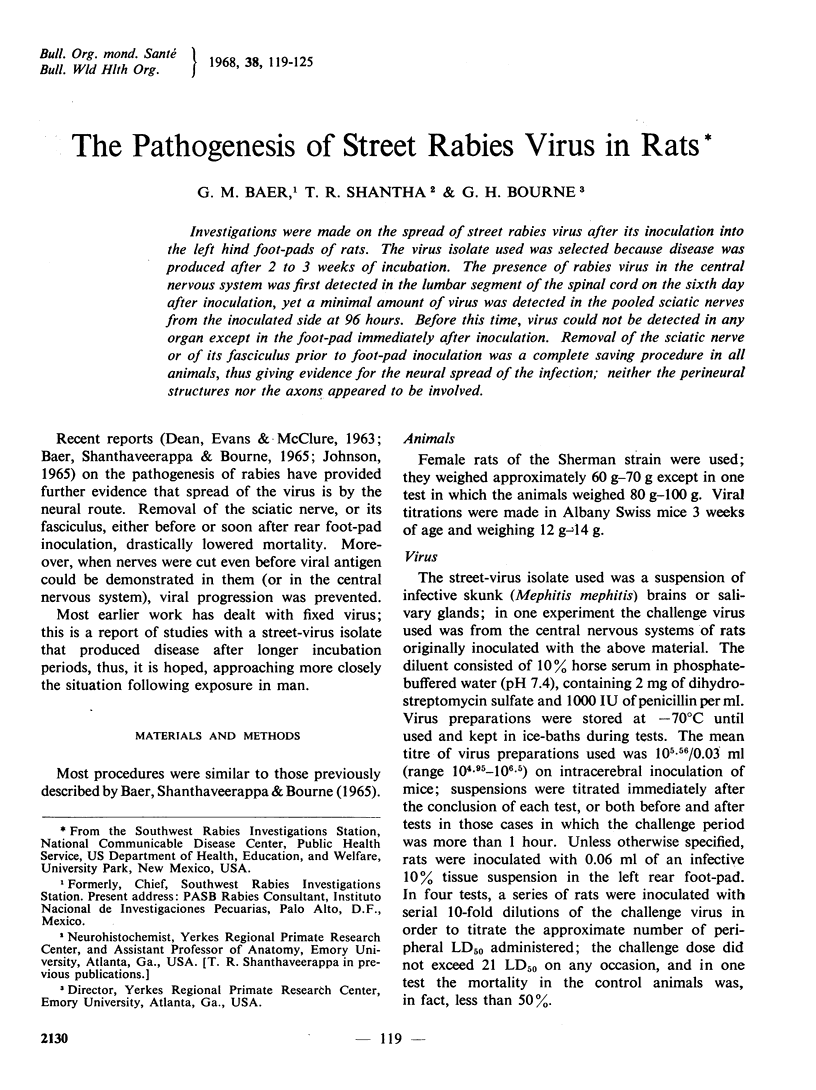
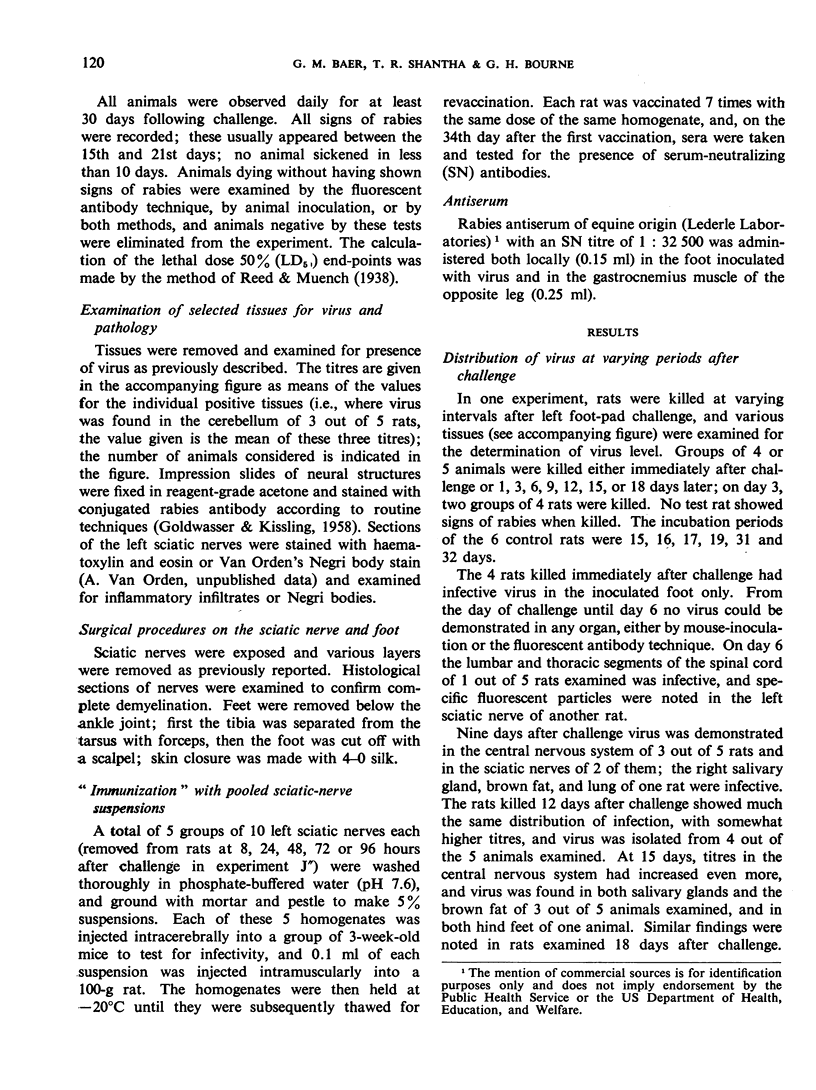
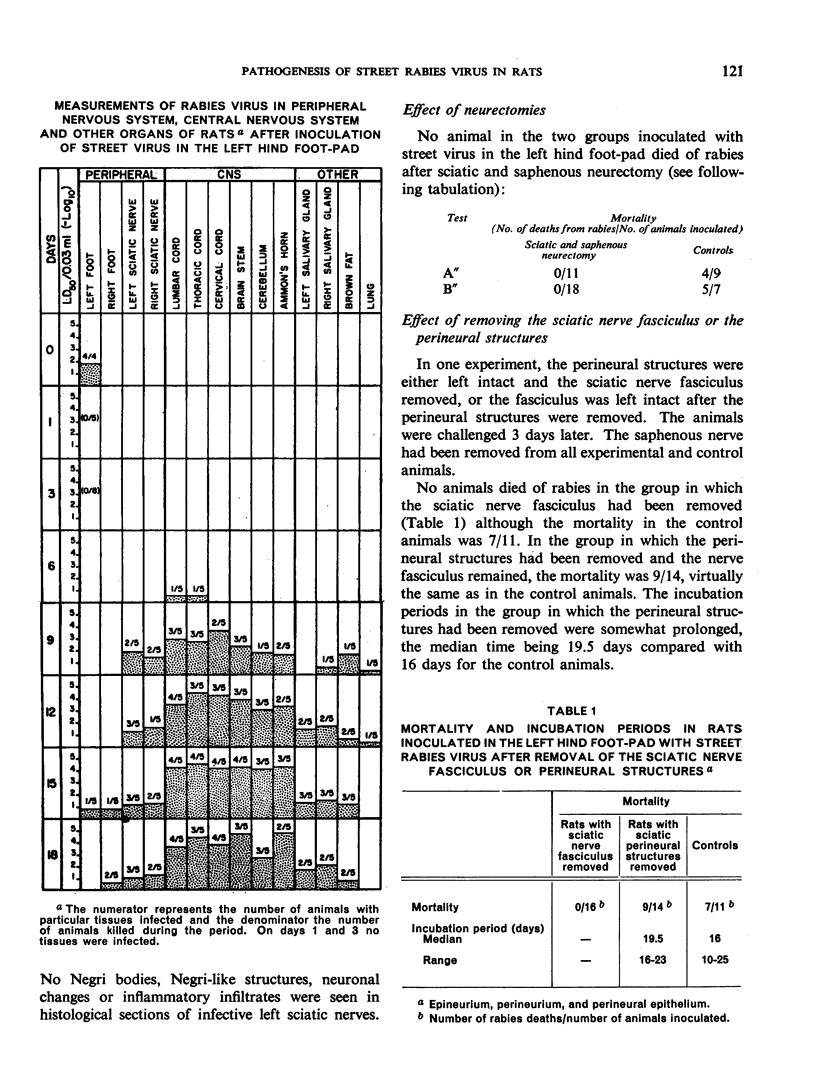
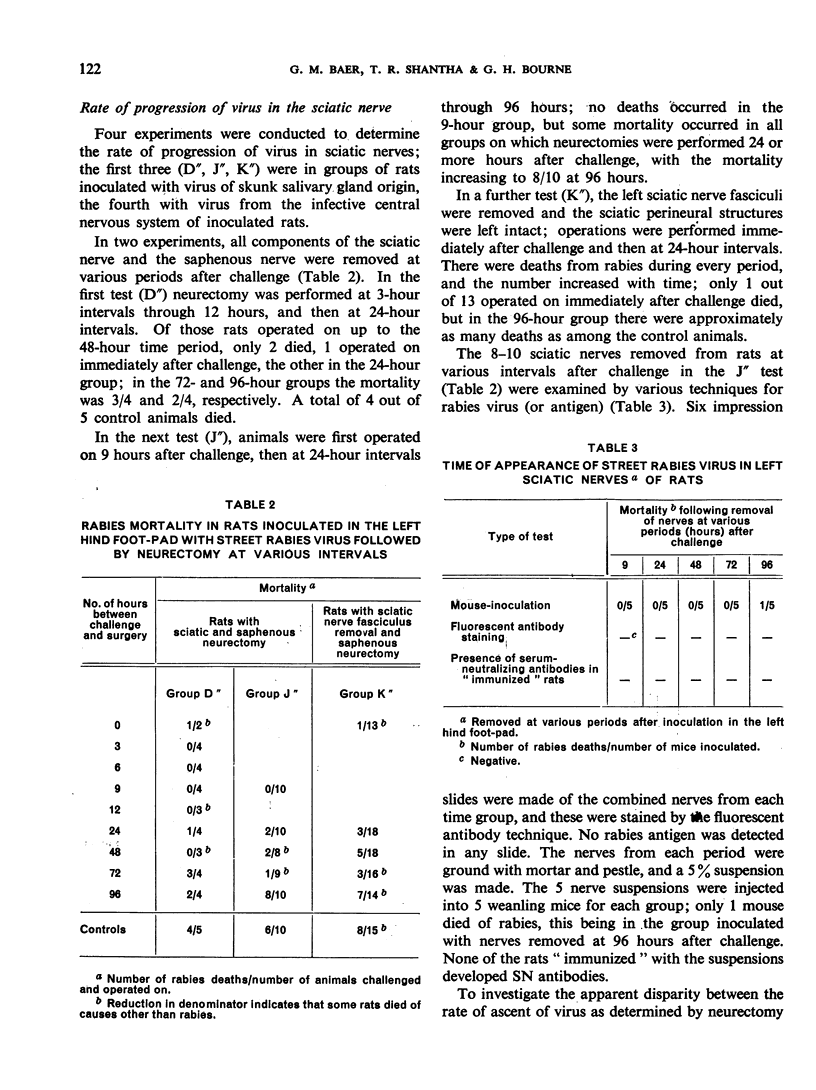
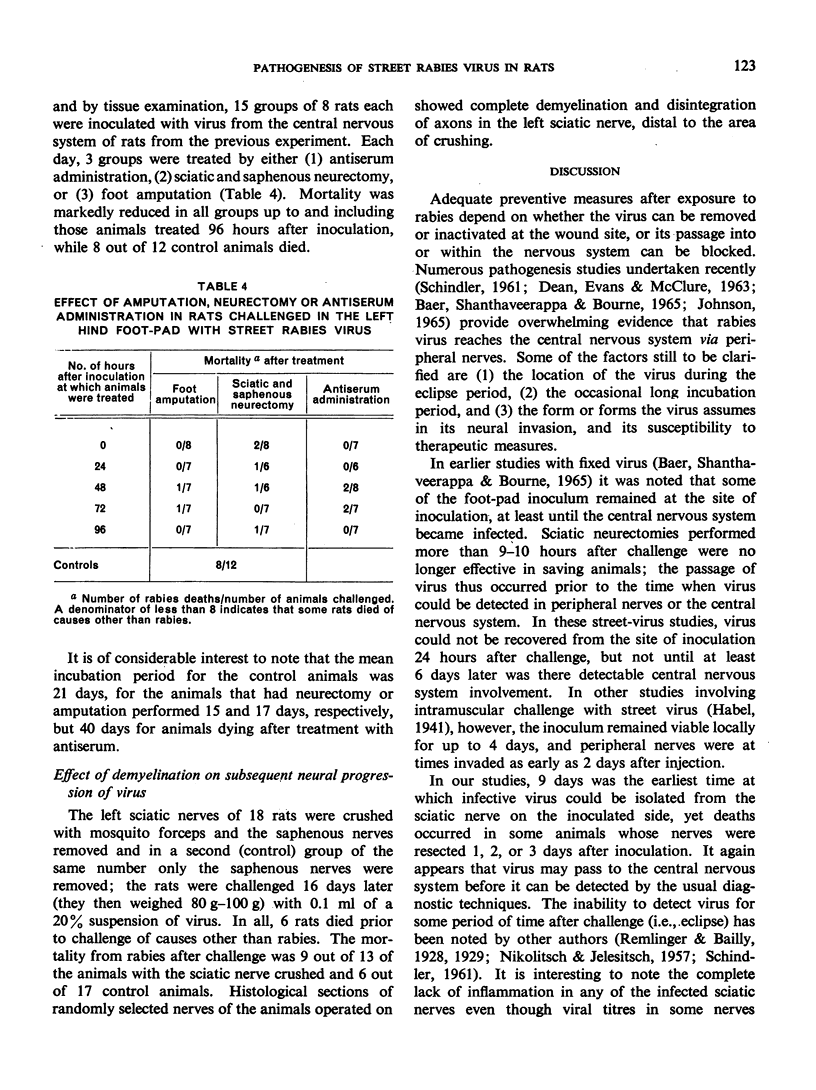
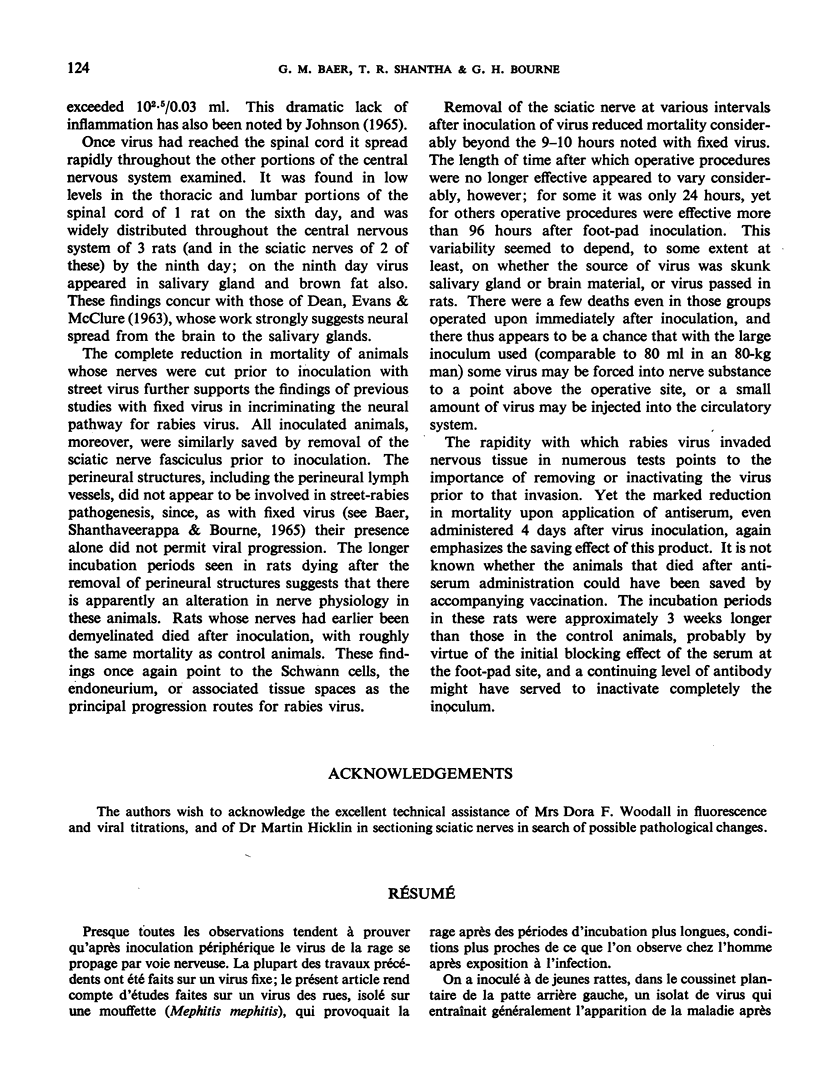
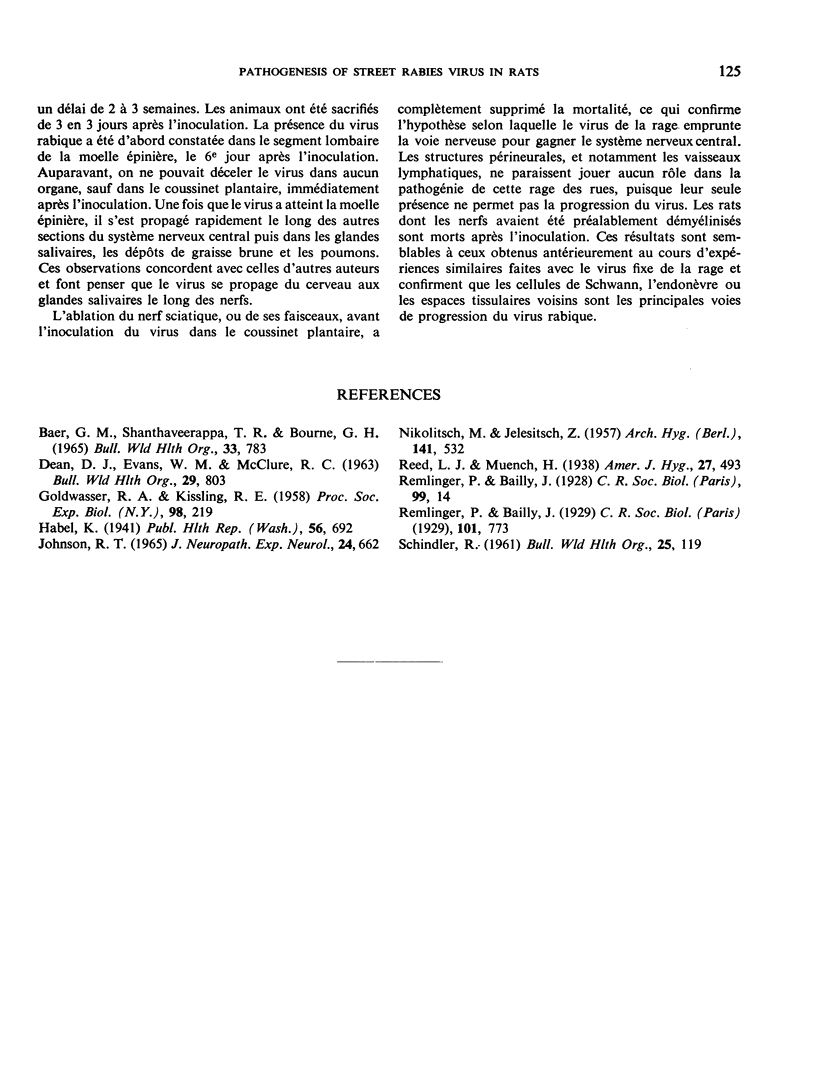
Selected References
These references are in PubMed. This may not be the complete list of references from this article.
- Baer G. M., Shanthaveerappa T. R., Bourne G. H. Studies on the pathogenesis of fixed rabies virus in rats. Bull World Health Organ. 1965;33(6):783–794. [PMC free article] [PubMed] [Google Scholar]
- DEAN D. J., EVANS W. M., MCCLURE R. C. PATHOGENESIS OF RABIES. Bull World Health Organ. 1963;29:803–811. [PMC free article] [PubMed] [Google Scholar]
- GOLDWASSER R. A., KISSLING R. E. Fluorescent antibody staining of street and fixed rabies virus antigens. Proc Soc Exp Biol Med. 1958 Jun;98(2):219–223. doi: 10.3181/00379727-98-23996. [DOI] [PubMed] [Google Scholar]
- Johnson R. T. Experimental rabies. Studies of cellular vulnerability and pathogenesis using fluorescent antibody staining. J Neuropathol Exp Neurol. 1965 Oct;24(4):662–674. [PubMed] [Google Scholar]
- NIKOLITSCH M., JELESITSCH Z. Phänomen der Eklipse bei dem Tollwutvirus und der Einfluss des Immunserums auf extraneurale Viren. Arch Hyg Bakteriol. 1957 Nov;141(7):532–537. [PubMed] [Google Scholar]


